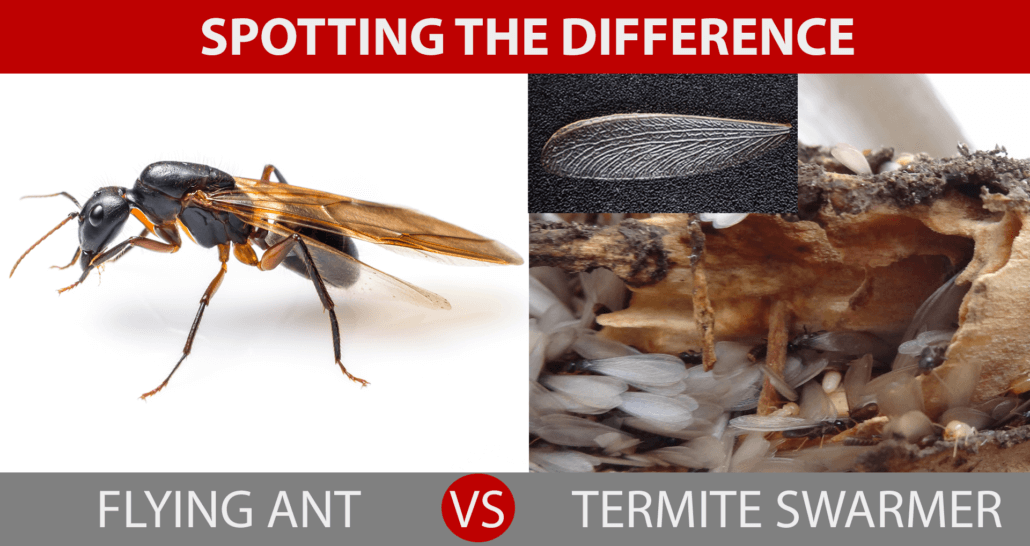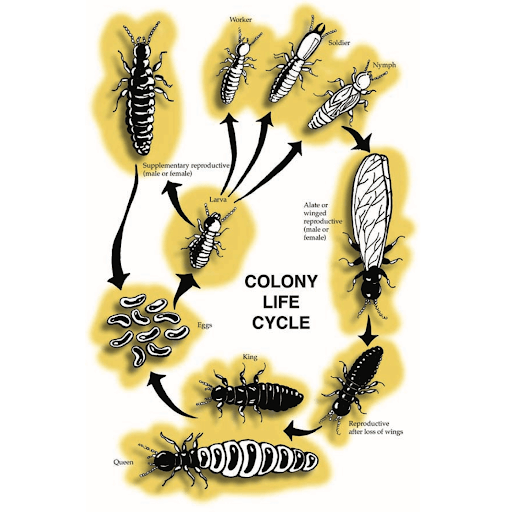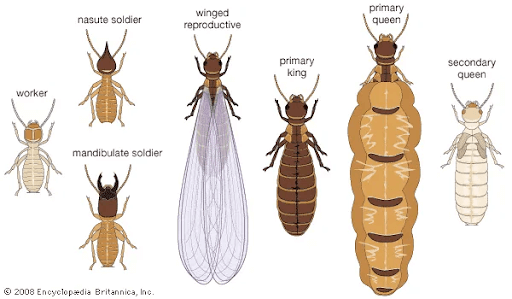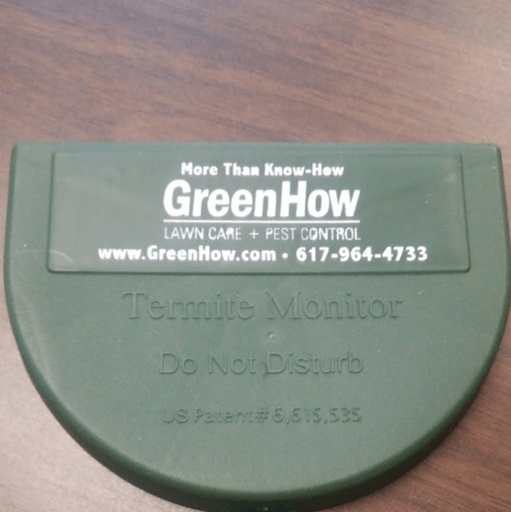How to Get Rid of Flying Termites
Ask a homeowner what their worst nightmare is when it comes to pests, and they’ll likely say, “Roaches.” But the truth is that termites continue to be the arch-nemesis of homes in the U.S.
The numbers don’t lie: The EPA estimates that termites cause billions of dollars in damages every year and in some states, experts estimate that up to 95% of homes show some evidence of a termite infestation.
If that weren’t alarming enough, some termites have wings. Yes, these munching wood eaters, who like setting up camp in your home’s nooks and crannies and snacking on your wooden structures, will also swarm around your home, buzzing incessantly.
Unfortunately, they’re more than a nuisance: From compromised structural integrity to messy discarded wings, flying termites are dangerous, and the best response is termination.
In this article, you’ll learn to identify the signs of an infestation, zero in on the type of termite you might be dealing with, and find out how to get rid of flying termites using various solutions.
What Are Flying Termites?
When people see winged insects buzzing around their property, they often assume it’s a simple case of summer season flies or even winged ants. And they might be right — flying termites are often mistaken for flying ants, and vice versa.

But if it is flying termites, you could have a serious problem, so you need to know how to recognize these winged pests.
Flying termites are simply termites that have wings, and you’re likely to see them in very specific places:
- Clustered around your wood trim
- Inching along the cracks in walls or ceilings
- Making their way around the pipes in your home
(To avoid confusion, you can think of flying termites as “termite swarmers,” and we’ll discuss the conditions under which termites develop wings and swarm.)
Though there are many types of termites scattered throughout the U.S., the most common, especially in northeastern states, is the subterranean termite.
In Massachusetts, the level of termite infestation ranges from moderate to heavy, only a step below the states with the heaviest levels of infestation.

These fellows like to live underground but will use mud tubes or food sources to tunnel from the ground to wood structures in your home.
And that’s why it’s hard to spot them if you don’t know what signs to look for: Termites like to keep hidden and travel through channels or tubes that can go otherwise unnoticed until it’s too late.
Do Flying Termites Eat Wood?
A lesser-known fact is that, even within a colony of termites, not all of these insects will eat wood. Soldiers, for example, are blind and don’t eat wood because their “job” is to defend and protect the colony.
It’s the workers and nymphs (the latter being new termite offspring that need to feed to grow) that will eat, tunnel, and burrow through your wood.
Meanwhile, the termites most homeowners are likely to see are, indeed, flying termites. These are the “primary reproductives” or “alates,” and they’re responsible for mating and expanding their colony. Like soldiers, they don’t eat wood either.

But that’s because reproduction is their primary function.
Termite swarmers will lose their wings and typically die soon after they swarm, so be on the lookout for the presence of their bodies or discarded wings. These are both significant warning signs that an infestation is not only present in your home but growing.
How to Identify Flying Termites
According to the Environmental Protection Agency (EPA), flying termites are easy to identify — just look for their four translucent wings, which are around double the length of their bodies.
Usually, termite bodies are anywhere between a quarter of an inch to three-eights of an inch, depending on the “caste” – or role – they play in their colony.
Termites, like ants, are social creatures, and their “specialization” within the colony has a lot to do with their biological as well as their physical characteristics.
Flying Termites vs. Flying Ants: What’s the Difference?
Sometimes, ant swarms are mistaken for termites, but it’s important to do your best when trying to spot and identify these insects. Though an experienced termite treatment technician can easily spot the differences, it may not always be obvious to homeowners.
Here are a few characteristics you might look for:

- Ants: Front wings longer than the back wings and antennae bent at an almost 90-degree angle
- Termites: Wings about the same in length while antennae are mostly straight (potentially a small droop)
Signs and Causes of a Flying Termite Infestation
Let’s be clear: Flying termites are, themselves, a warning sign. Their presence indicates that there’s a “mature” termite colony somewhere in the vicinity or on your property.
By mature, we mean that a colony has reached its peak occupancy, which happens around two to four years after a colony’s establishment.
When a colony matures and can grow no further, reproductive males and females will swarm to expand the colony. And that’s what you’re likely seeing when you notice flying insects around your home.
Usually, warm and wet weather conditions and times of year (spring and autumn) trigger swarming activity. The warmth and moisture signal ideal conditions for the reproductive termites — the alates — to venture forth and form new colonies.
The main “role” of termite swarmers is to leave the colony, form new ones, and expand the empire. As such, if there is a termite infestation on the property, eventually, flying termites will start swarming.

Seeing flying termites around could also indicate a mature colony not directly on your property — yet. The existing colony might be somewhere outside, far enough from your home. But that doesn’t mean they won’t migrate to your home.
The other problem is certainty: Not all alates mate successfully. So, there’s no way of knowing if a swarm successfully started a new colony on your property. Only a professional pest control expert can determine if there’s an infestation.
How Do Flying Termites Get Inside the House?
Many people think that flying termites are like moths — they buzz about your porch or driveway lights, using them to navigate and even find sources of food.
But though they’re similarly attracted to light, flying termites don’t go into your home to swarm and mate. Instead, they emerge from your home. So you don’t have to worry about lights in your home inviting swarming termites.
If you already have a termite infestation, then these termite alates will come out from their hiding places behind your walls in order to mate and start new colonies.
If they’re present in the soil, they’ll use mud tubing — which are tunnels of mud that look like streaks to us — to travel up and out. Keep a lookout for this significant sign of a current or even impending infestation.
Other signs of swarming termites include:
- The presence of a large number of shed wings, especially in well-lit areas
- Large numbers of dead flying termites on your porch or other areas where swarms have been buzzing
Keep in mind that a new colony will have anywhere from 60,000 to 1 million workers — and this is the class of termites that actually feed on the wood.
Given the right conditions, they’ll eat between 2 to 3% of their body weight every day, and they can work through a one-foot piece of wood in about six months. So it’s in your best interests to get preventative with termite control.
However, if they’re not already present in your home, swarming termites might mate elsewhere. They also might use certain attractants to decide if your home is the right spot for their new colony.
Use this checklist to evaluate the “risk factors” for a termite infestation in your home. If you answer “yes” to any of these items, your home might need a special inspection or more frequent termite checks to ensure your property hasn’t become a site for termites:
- Are there cracks in your concrete foundation?
- Are any of your home’s posts in concrete?
- Do you have an earth-filled porch?
- Are there any leaking pipes or faucets?
- Are shrubs placed near air vents?
- Is there wood debris underneath or around your home?
- Do you have low foundation walls or footings?
- Does brick veneer cover your home’s foundation? Termites may have hidden access if the bond fails.
- Did you place flower planters near foundation walls?
- Are there wooden forms around drains?
- Are the porch steps in contact with the ground?
- Do your heating units have obstructions around them?
- If you have trellises, do they touch the soil?
- Is there rigid board insulation, stucco, or siding that extends all the way to the soil?
Damp and decaying wood, tree limbs near your home’s exterior, unsealed cracks, and bad drainage are also common examples of termite magnets.
And that’s because these conditions indicate the presence of two things termites need to thrive: moisture and cellulose (which is what they eat from wood and paper).
Potential Risks of Flying Termites
Since flying termites don’t feed, they don’t directly cause any harm to humans or pets. However, it’s their primary purpose — to mate and establish a new colony — that poses an even greater risk to your home and property.
When they mate and start a new colony, the resulting offspring can cause all sorts of damage and risks, including:
Risk #1: Timber Damage
Non-flying termites (soldier, queen, king, and worker termites) eat wood, paper, and other cellulose-rich materials. Seeing flying termites is a telltale sign that new colonies might develop.
If they do, the new termite generations could start feeding on wooden structures in and around your home. And if you don’t take steps to quash the termite infestation, timber damage can result in costly repairs. You might also have to replace compromised structures.
Look for damaged wood that has been chewed “with the grain” rather than against the grain, as this is a subterranean termite feeding pattern. Additionally, termite-damaged wood will seem to have “layers” as termites avoid the hardwood portions of timber to feed on the softwood.
Risk #2: Recurrent Infestations
The main reason you need to know how to get rid of flying termites and their progeny is that once flying termites mate and produce, you could end up with millions of termites living in or around your home in just a few short years.
Then, you could have to deal with periodic swarms and recurring infestations. And while you could destroy one colony, you might soon see swarming termites coming in from another nearby colony.
Getting rid of flying termites is an effective way to ensure they do not establish new colonies, but you’ll also need to address the underground colonies from which they emerged.
Risk #3: Attracts Other Pests
When flying termites swarm, they create a food bonanza for mice, rats, frogs, small snakes, and other vermin. Following close behind these small vermin are larger animals like larger snakes, raccoons, and shrews.
Ignoring swarming termites can create an ecosystem of vermin and predators on a property, making it unsafe and increasing the likelihood that infestations of worse pests (like rats and mice) will occur.
How to Get Rid of Flying Termites in and Around Your Home
While getting rid of flying termites inside the house requires more preventative measures, doing so outdoors is a curative effort.
Since they emanate outdoors, you will need to use a combination of extermination, preventive, and routine maintenance measures to get rid of both flying termites and the termite colonies they come from.
Here are the top ways to get rid of flying termites:
Method #1: Seal all Entry Points
Prevention is better than cure. The best way to get rid of flying termites in the house is to prevent them from entering in the first place. Use weatherproof seals under doors, silicone caulking to seal gaps, and bug mesh on windows.
While it’s true that fewer entry points will make it more difficult for termites to enter the house, you’re still at risk if you leave the soil and ground around your home untreated or unaddressed.
For this, professional termite treatments include bait systems, termiticides mixed with water and applied to key areas, and industry-approved total colony elimination systems.
Method #2: Use a DIY Orange Oil Solution
Orange oil is a non-water-soluble orange peel extract whose active chemical, D-limonene, has weed and bug-killing capabilities.
Spraying an orange oil solution will kill termites and their eggs. What’s even more useful is applying it to surfaces they might use, like windowsills, doorposts, and skirting can help repel them.
And since termites like to travel upward through mud tubing from moist soil to your home’s interiors, consider spraying this solution close to your foundation’s base or wherever your home physically touches the ground.
Spraying orange oil around these areas is ideal because this all-natural solution won’t harm pets or kids.
Method #3: Deploy Bug Zappers
A bug zapper attracts and electrocutes flying termites, offering a quick and effective extermination method. Switch off outdoor lights and place the bug zapper in the darkest area for the best results.
Quick Tip: A large swarm can easily overwhelm the bug zapper, so you’ll need to check it every morning during swarming season.
Method #4: Use Nematodes to Destroy Termite Colonies
Nematodes are tiny parasitic organisms that, when introduced into a termite colony, act as a natural bug killer, infecting termites and killing them through a parasitic relationship.
Although nematodes do not directly get rid of flying termites, they can destroy any colonies in the area and prevent the recurrence of flying termite swarms.
Method #5: Leverage Yard Materials that Deter Termites
Termites love yard materials rich in cellulose like wood, plants, and organic soil. Using yard materials like rubber mulch, cedar mulch, river rock, and pea gravel, which have none of these delicious properties, deters flying termites.
Even if they swarm from the neighbor’s yard, these yard materials will compel them to leave your yard alone and keep looking for a suitable place to nest.
Method #6: Sprinkle Boric Acid on Trouble Spots
When ingested by termites, boric acid blocks the digestive system, starving them to death. Sprinkling the substance around the yard and house entry points will kill any flying termites who have mated and seek a nesting spot.
Quick Tip: Boric acid is also helpful for exterminating existing colonies.
Method #7: Clean Up the Yard
Termite swarmers love a yard full of materials their offspring can eat and dark places they can hide. Piles of lumber and old furniture attract flying termites like a magnet.
Getting rid of such items and keeping a clean yard makes your property less attractive to flying termites – and will also prove to be a fantastic way of getting rid of existing and incoming flying termites.
How to Prevent Future Flying Termites
If you want to avoid battling flying termite swarms, you will need to take measures to prevent the emergence of flying termites. Preventing a termite infestation can also eliminate the bugs from your outdoor and indoor areas, which means less pest control on your hands.
Here are the steps to take to prevent a flying termite infestation:
Step #1: Conduct Regular Outdoor Termite Inspections
There is a reason termites are known as silent destroyers: They can infest an area and eat wooden and other cellulose-rich structures for years without being noticed. The only proof of mature colonies somewhere on the property is the appearance of flying termites.
Your first step is to perform a termite inspection, a thorough and multi-step process conducted by a professional termite control technician. The process is designed to help identify termite colonies (especially the underground variety).
Such checks can also extend indoors to see if they have infiltrated the house and infested any wood structures.
And while termite inspections and treatments are essential — termite “renewals,” which include annual checks for new activity and monitors placed against the foundation of your home, are the key to protecting your home from future problems.

Step #2: Exterminate Any Termite Colonies
Flying termites emerge from mature colonies, so exterminating termite colonies is a surefire way of preventing future flying termite infestations.
At Greenhow, we use two methods to exterminate eastern subterranean termites, the prevalent species in Boston and most of New England:
- Termite liquid treatments like Altriset inhibit termites’ ability to feed, killing them off.
- The Sentricon® System targets only eastern subterranean termites, inhibiting the molting process and killing the entire colony.
Step #3: Maintain Outdoor Areas
Yard maintenance is crucial in ensuring termites do not infest your property. Get rid of dead trees, idle timber, old furniture, and other potential food sources so termites have nothing to eat even if flying termites venture into your yard.
Also, be on the lookout for piles of dead leaves and other debris, which can serve as a food source for termites. Regular yard cleanup will help to keep flying termites and their subterranean counterparts off your property.
Step #4: Keep Up with Home Inspections and Repairs
Termites rely on two things when infesting a house: Moisture and food. An overlooked leaking pipe or water seeping through a wall can create ideal conditions for termites – especially when combined with unprotected wooden structures.
Home inspections can identify areas with excessive moisture and wooden structures that might be vulnerable to termite attack. Repairing leaking pipes can prevent the formation of colonies and prevent the emergence of flying termites.
Step #5: Treat Wood Surfaces
Denying termites a ready food source through wood treatment is a highly effective method of termite extermination. Even if flying termites invade your yard or home, they will not find vulnerable wood to eat.
Greenhow’s borate wood treatment, Boracare, protects wood structures from termites and other vermin like beetles and fungus. The treatment remains effective for many years, offering a lasting solution to potential flying and subterranean termite infestations.
Conclusion
Flying termites can be a harbinger of new termite colonies, a recipe for disaster when considering the damage termites inflict on wooden structures.
Learning to identify them, when they swarm, and what this means for your yard and home can help you determine the proper steps to use to get rid of them.
Although we have highlighted ways to get rid of flying termites, it is important to note that termite swarms will likely recur if any colonies remain on or near your property. That’s why it’s so important to have professionals ensure you don’t have an undetected termite colony if you notice flying termites or signs of a swarm.
The good news is that Greenhow is a trusted and experienced termite control and treatment company serving Boston, MA, and Eastern Massachusetts.
Whether you see flying termites swarming your property or simply want a termite inspection, — contact us today and one of our termite control experts will arrive shortly to survey and eliminate any potential termite colonies.
